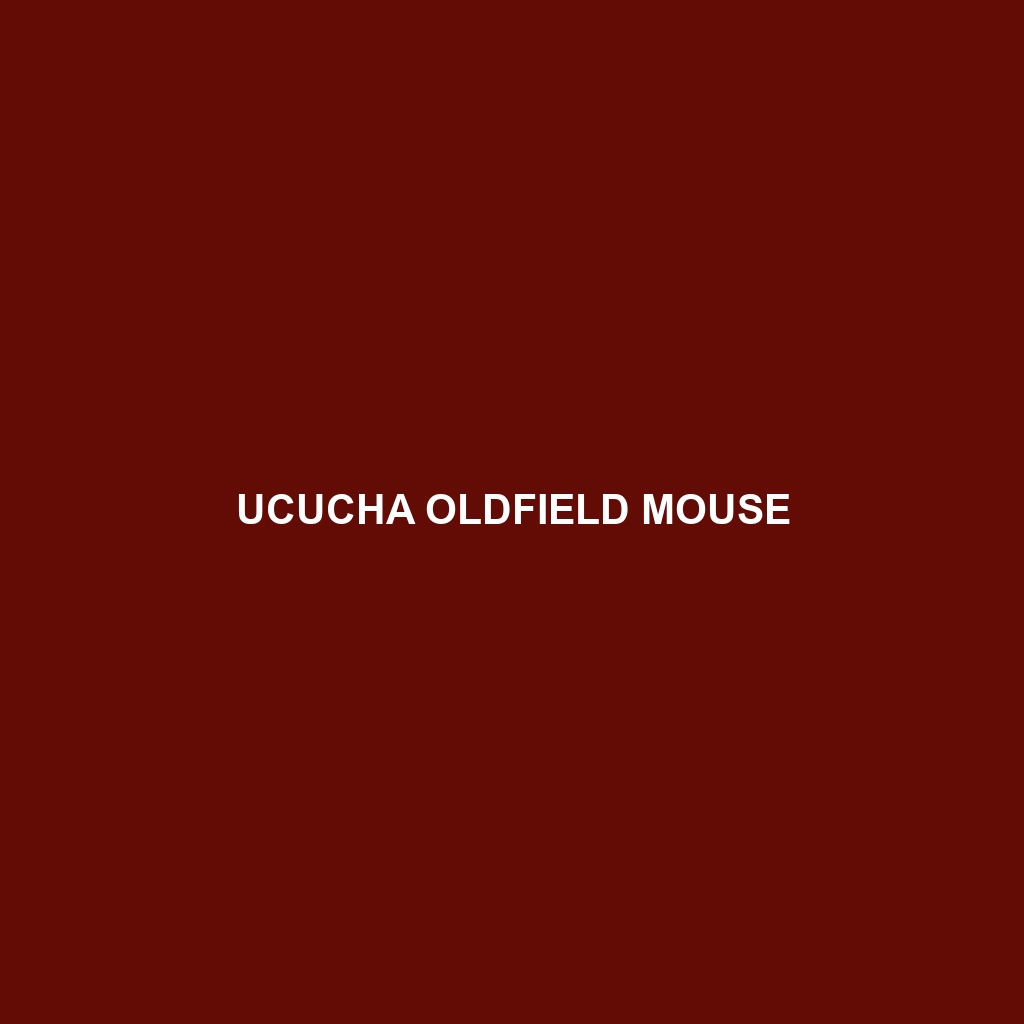Common Name: Ucucha Oldfield Mouse
Scientific Name: Abrothrix pseudoisabelae
Habitat:
The Ucucha Oldfield Mouse is primarily found in the temperate forests and grasslands of southern South America, specifically in regions like central Chile and western Argentina. These habitats consist of a mix of shrublands, wet meadows, and open woodlands, providing the necessary environment for foraging and nesting.
Physical Characteristics:
This small rodent typically ranges in size from 70 to 120 mm in body length with a tail length of approximately 80 to 100 mm. The Ucucha Oldfield Mouse features a soft, dense fur that is predominantly light brown, with a lighter underbelly. Its ears are large and rounded, while its eyes are prominent, adapted for nocturnal activity. Distinctive features include its long, slender tail and slightly larger than average hind feet, which aid in its locomotion across varied terrains.
Behavior:
Ucucha Oldfield Mice exhibit a primarily nocturnal lifestyle, actively foraging during the night. They are known for their agile movements and ability to navigate through complex underbrush. These mice are social creatures, often observed in small groups, and exhibit burrowing behaviors that provide shelter from predators and harsh weather. Their vocalizations and scent markings play crucial roles in their communication and territoriality.
Diet:
As omnivorous rodents, Ucucha Oldfield Mice have a diverse diet consisting mainly of seeds, fruits, roots, and some insects. Their foraging habits contribute to seed dispersal in their habitat, playing a vital role in maintaining ecological balance. Their preference for soft, succulent plant materials highlights their adaptability to seasonal food availability.
Reproduction:
The breeding season for Ucucha Oldfield Mice typically extends from spring to early summer, though it may vary based on environmental conditions. Females are known to produce litters of 3 to 6 offspring after a gestation period of approximately 23 days. Young mice become reproductively mature as early as 5 weeks old, which contributes to the population dynamics within their habitat.
Conservation Status:
The Ucucha Oldfield Mouse is currently classified as ‘Vulnerable’ according to the International Union for Conservation of Nature (IUCN). Habitat loss due to agriculture and urban development poses significant threats to their population; hence, conservation efforts are essential to protect their natural environments.
Interesting Facts:
One fascinating aspect of the Ucucha Oldfield Mouse is its ability to adapt to changing environmental conditions. This species is also notable for its unique social structures, which often involve cooperative behaviors among individuals within a group, enhancing their survival chances in the wild.
Role in Ecosystem:
Ucucha Oldfield Mice play a critical role in their ecosystem as both prey and seed dispersers. Their activities help regulate plant populations and contribute to the overall health of their habitats. Additionally, they serve as a food source for various predators, thereby maintaining the food web balance in their ecological community.
